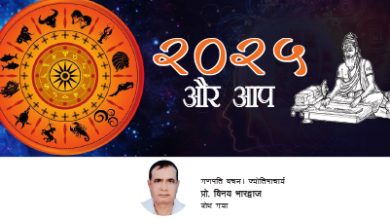
CEO Swapify, Indore
The tourism industry is an integral aspect of any country; it generates revenue, creates jobs, brings in foreign currency, and supports the local ecosystem if managed responsibly. Additionally, tourism fosters cultural exchange and international understanding, strengthening diplomatic relations and promoting peace. It also drives infrastructure development, leading to improved transportation, accommodation, and public services, which benefits both tourists and local communities. Tourism helps preserve cultural heritage and natural resources by raising awareness and funding for conservation efforts. A robust tourism sector can diversify a country’s economy, reducing dependence on traditional industries and enhancing resilience against economic downturns. For example, pristine beaches bring to mind the Maldives or Australia, deserts evoke images of the Middle East, and hi-tech cities remind us of Hong Kong, Singapore, and Dubai. But what comes to mind when you think of India?

India’s Touristic Identity
India’s tourism identity is multifaceted, encompassing vibrant cultural heritage, diverse landscapes, and historical landmarks. However, a critical aspect of India’s tourism potential remains under-utilized: its pilgrimage sites. While these sites draw significant domestic tourism, particularly among older age groups, younger travelers often seek different experiences. Bridging the gap between traditional pilgrimage and modern tourism is crucial for elevating India’s tourism sector, especially to cater to the growing number of young travelers seeking meaningful, yet contemporary experiences.

Domestic tourism in India sees older age groups flocking to pilgrimage sites, while younger travelers prefer weekend getaways and relaxed treks. Cities like Rishikesh attract youth with yoga and adventure sports rather than traditional pilgrimage. So, why aren’t younger audiences visiting sites like Kashi, Mathura, or Somnath?

Addressing the Disconnect
The younger generation’s fast-paced lifestyle, need for constant internet connectivity, and limited vacation days steer them away from traditional pilgrimage sites, which often lack modern amenities. Additionally, infrastructure at these sites is either overcrowded or under-utilized, highlighting the need for a market-driven approach post-infrastructure development, similar to the successful model around the Statue of Unity.
Modernizing Pilgrimage Experiences and Curating Experiences
In an effort to reimagine India and Bharat, the government has made significant efforts to promote the various things India has to offer digitally but has failed to showcase the same. Young travelers seek experiences that allow them to connect and learn about history in engaging ways. Providing high-speed internet and mobile apps offering virtual tours and real-time updates can make these sites more appealing. Developing packages that combine pilgrimage with yoga, meditation, and Vedic workshops would cater to the interests of younger travelers seeking both spirituality and modern comforts. Highlighting festivals and local traditions, and offering volunteer opportunities can add meaning to travel and deepen the cultural experience. Combining traditional pilgrimage with trekking, camping, and local excursions can make the journey more appealing to younger travelers seeking both adventure and spirituality.
Optimizing Infrastructure
Using technology for crowd control and infrastructure optimization can help manage visitor flow better. Slot booking, special entry allowances, and seamless experiences will encourage young and foreign travelers to experience India, who otherwise would avoid places of extreme importance due to discomfort and inconvenience. Encouraging eco-friendly accommodations and local businesses to offer sustainable products and services will attract environmentally conscious young tourists and ensure the responsible use of resources.

Enhancing Accessibility
Improving transport links to pilgrimage sites and introducing special trains and flights will make travel more convenient. Developing budget-friendly lodging options like youth hostels near pilgrimage sites will cater to the needs of young travelers who prioritize affordability and comfort.
Switching to a Product-Based Approach
Innumerable sites of great importance have failed to become major pilgrim destinations due to a lack of infrastructure and promotion. Sites such as the Hazratbal Shrine in Kashmir see fewer visitors compared to others due to inconvenience. Creating immersive experiences, such as following the great epics of India, can attract more tourists. For example, a journey starting from Ayodhya, retracing the exile route to the southern tip of the peninsula and into Sri Lanka, can teach travelers about the revered aspects of the epic Ramayana. Alternatively, a tour following the footsteps of the princes of Kuru, learning ancient Indian weaponry, and playing games like those in the Mahabharata, can enhance exposure to India’s history and culture.
Revitalizing pilgrimage tourism to appeal to younger generations requires modern amenities, cultural immersion, and strategic promotion. By integrating technology, optimizing infrastructure, and creating curated engaging experiences, India can make its sacred sites more attractive to young travelers, balancing spiritual essence with contemporary needs. This approach not only preserves cultural heritage but also ensures the sustainability and growth of the tourism sector in a way that resonates with the values and preferences of younger generations.







